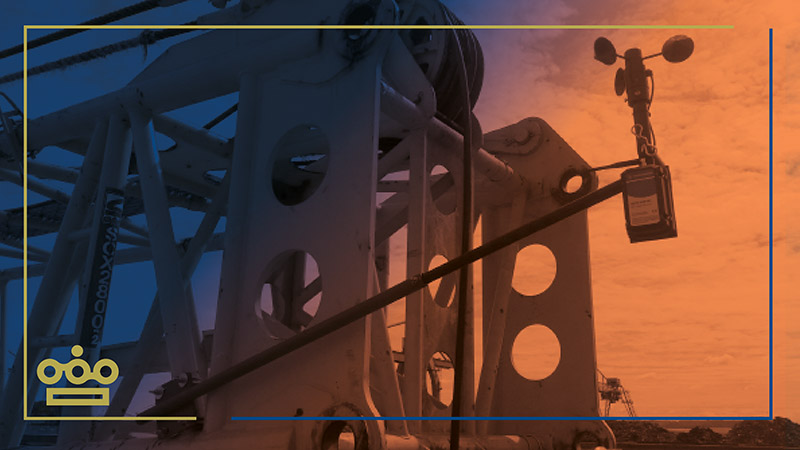
At Sarens, we help restore spiraling cathedrals, lift nuclear power plans into place, and build the bridges that connect the world. Our cranes are massive and for us, as our motto declares, there isnothing too heavy, nothing too high.
But the power of our work is also in the smallest of details, and even our mightiest cranes move according to the minute calculations of a small device many might miss: the anemometer, or wind sensor.
The anemometer tells us about the movement of the winds, warns us of gusts that would threaten a lift, and guides us to make the safest choices. Measuring the wind speed in 3-second gusts, the anemometer ensures that our cranes always stay within safe operating limits.
The anemometer guides everything we do. And though it is small, it is always in our sights. Our cranes are fitted with an electronic anemometer at the top of the boom, as well as with a corresponding display inside the cab, in accordance with the EN 13000 European standard.
The anemometer alerts us to actual wind speeds at the height of the boom, and this data is often displayed alongside the manufacturer's maximum allowed wind speed for that crane model, boom/jib length, and selected load chart. If at any point wind speeds exceed the maximum limit, a flashing wind speed symbol and acoustic signal alert the crane driver to cease operations.
Sarens' globe-tracking system also monitors wind speeds remotely, and can measure and log wind conditions for any crane in the fleet, at any given time. This system collects data from a second wireless anemometer located at the top of the boom. This anemometer has its own display in the crane cabin and links to the Sarens globe-tracking system, which allows us to see the evolution of wind speeds for the selected crane's location. That data includes 3-second gust measurements as well as maximum, minimum, and average wind speed values over the course of 10 minutes.
This small but significant device never rests-even when the cranes do. For example, although a crane may be parked upright, it must still respect the manufacturer's maximum permissible wind speed. If high-speed winds are in the forecast, then the crane must be stowed or the boom laid down in due time. Even with those measures in place, maximum wind speeds must still be respected.
The anemometer really shines, however, during operations in high-wind areas-like the open plains where wind turbines are often erected. Here, wind speed monitoring takes on an a new significance, and wind turbine operations must often be put on hold because winds frequently exceed the limits for safe lifting. This is one reason why companies in this industry will often distinguish between operating time and standby time for unworkable weather, as different rates may apply.
At Sarens, our reputation may be for the massive lifts and big projects, but our dedication is to the little details that make all of that possible-details like the anemometer, which always point us towards the right decision no matter which way the wind is blowing.